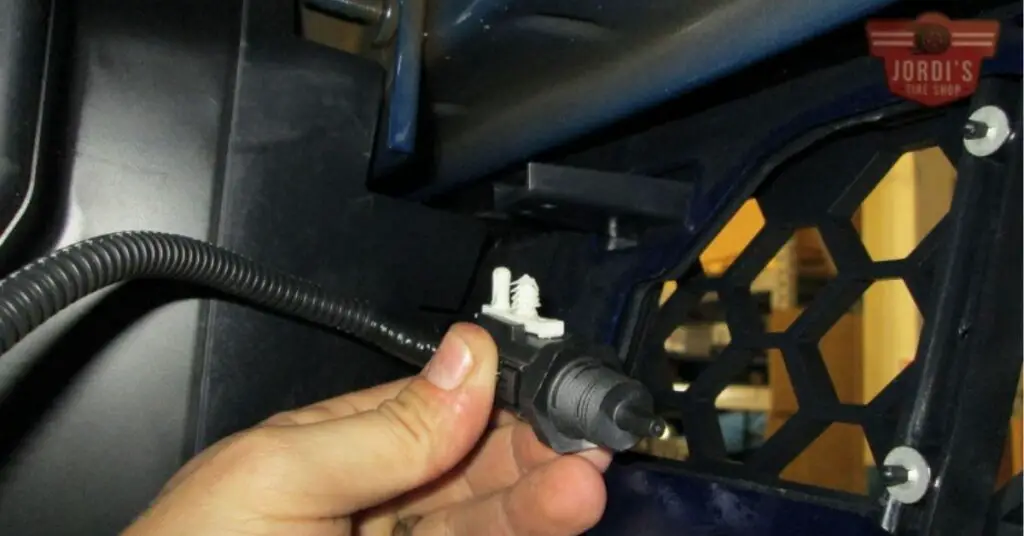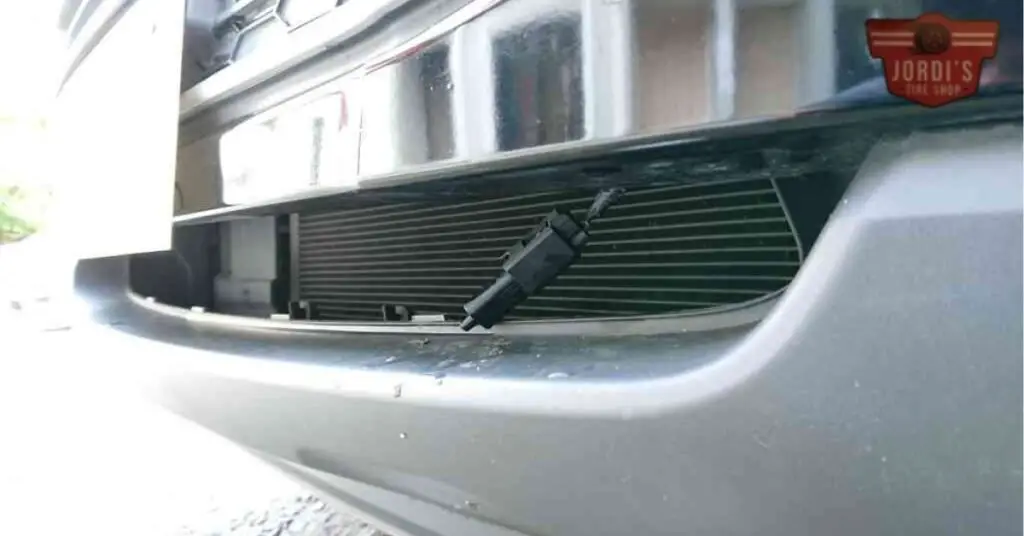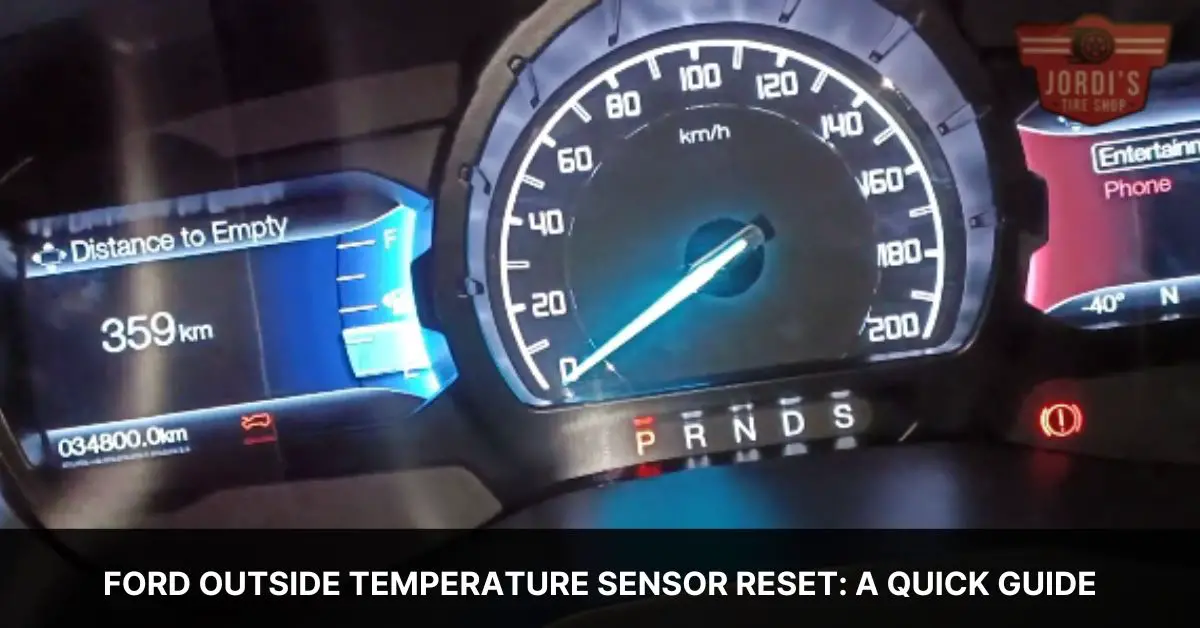We’ve all been there—glancing at our Ford’s dashboard on a chilly morning only to find the outside temperature reading seems a bit… off. Whether it’s showing you a balmy 80 degrees when you’re shivering in the cold, or it’s stuck on a single reading, it’s clear something’s not right. Luckily, resetting the outside temperature sensor is often a quick fix we can tackle ourselves.
Before we dive into the nitty-gritty of how to reset the sensor, let’s take a moment to understand why it’s important. Not only does this little gadget help us decide whether to grab a jacket on our way out, but it also plays a crucial role in our Ford’s functionality, affecting everything from the climate control system to how the engine operates. So, let’s get ready to ensure our ride’s temperature readings are as accurate as can be, keeping our journeys comfortable no matter the weather outside.
Understanding Ford Outside Temperature Sensor

In light of the occasional inaccuracies in outside temperature readings on Ford vehicles’ dashboards, it’s crucial to have a deep understanding of how the outside temperature sensor actually works. This sensor, integral to the vehicle’s climate control system, significantly impacts both comfort during a journey and the overall engine performance.
The outside temperature sensor, typically located near the front bumper or under the side mirror, monitors the ambient air temperature around the vehicle. Ford relies on this data to adjust the vehicle’s climate control settings, ensuring a comfortable cabin environment. Furthermore, the sensor’s readings influence the engine’s fuel-to-air ratio, optimizing performance and efficiency based on the outside temperature.
Occasionally, due to various factors like dirt accumulation, sensor damage, or software glitches, the sensor might display incorrect temperature readings. This not only affects the comfort level inside the car but can also lead to less-than-optimal engine performance and efficiency. Given these potential issues, it becomes evident why maintaining accurate sensor readings is so critical for any Ford vehicle owner.
Since the accuracy of the outside temperature sensor directly affects the vehicle’s operation and occupant comfort, resetting the sensor when inaccuracies arise ensures that these systems function as intended. As we proceed, we’ll delve into the steps required to reset the Ford outside temperature sensor, enabling you to quickly remedy any discrepancies in the temperature readings displayed on your dashboard.
Common Issues with Ford Outside Temperature Sensors

Building on the importance of maintaining accurate readings from the outside temperature sensor, we delve into the common issues that may necessitate a reset. Identifying these issues early helps prevent inaccurate temperature readings on your Ford’s dashboard, ensuring the climate control and engine operate efficiently.
Inaccurate Readings Due to Sensor Blockage
One prevalent issue is sensor blockage. Dirt, debris, or even ice can cover the sensor, located near the front bumper or under the side mirror, leading to false readings. For instance, if the sensor is blocked by ice, it might show much colder temperatures than the actual air around.
Sensor Damage from External Factors
External factors can also cause sensor damage. Accidents, road debris, or harsh weather conditions might physically damage the sensor. This damage could disrupt its functionality, causing it to send incorrect temperature data to the vehicle’s system.
Electrical Issues Leading to Malfunction
Electrical problems represent another common issue. Corrosion of the wiring harness or connections linked to the sensor can result in malfunction. This corrosion impedes the sensor’s ability to accurately transmit temperature data, requiring a reset or more significant repair to restore accurate readings.
Software Glitches Affecting Temperature Display
Lastly, software glitches within the vehicle’s system can cause discrepancies in temperature display. Although the sensor itself may function correctly, a glitch in the car’s software can lead to incorrect temperature readings on the dashboard. This situation often requires a reset of the system or an update to the vehicle’s software to correct the displayed temperature.
Understanding these common issues helps us recognize when a reset of the Ford outside temperature sensor might be required. Maintaining accurate sensor readings ensures the comfort and efficiency of your journeys, making recognizing and addressing these problems essential for all Ford vehicle owners.
Step-by-Step Guide to Resetting Your Ford’s Outside Temperature Sensor
After discussing the importance of keeping your Ford’s outside temperature sensor functioning correctly and the common issues that can affect its accuracy, let’s dive into how to reset it. Resetting the sensor is an essential maintenance step that ensures you get the most accurate readings, contributing to a comfortable and efficient driving experience.
- Turn Off Your Vehicle: Ensure your Ford is turned off before you start the reset process. This safety measure prevents any electrical issues while you’re working on the sensor.
- Locate the Outside Temperature Sensor: Typically, the outside temperature sensor is located near the front bumper or within the grille of your Ford. It’s small and might be somewhat hidden, so take your time to find it.
- Inspect and Clean the Sensor: Before resetting, inspect the sensor for any physical damage or dirt accumulation. Clean it carefully with a soft cloth. Sometimes, dirt or damage can cause the sensor to give inaccurate readings, and cleaning might be all that’s needed.
- Disconnect the Battery: To reset the sensor, disconnect the battery for a few minutes. This step will reset the vehicle’s electrical system, including the outside temperature sensor. Use a wrench to loosen the negative battery terminal and then remove the cable.
- Reconnect the Battery: After waiting for about five minutes, reconnect the battery cable and tighten the terminal with your wrench. This action completes the reset process for the sensor.
- Check Sensor Functionality: Turn on your vehicle and give it a few minutes to ensure the outside temperature display updates. It might take a short drive for the sensor to provide an accurate reading as it recalibrates.
If the outside temperature display still shows inaccurate readings after you’ve followed these steps, it might indicate a more serious issue with the sensor or related components. In such cases, it’s best to seek professional help from a certified Ford technician who can diagnose and resolve the problem.
Following this guide, you’ll have taken a significant step towards ensuring your Ford’s outside temperature sensor accurately reflects environmental conditions, enhancing your driving experience and vehicle performance. Regular checks and resets can prevent future issues and maintain your car’s efficiency.
Troubleshooting After Reset

After completing the reset process of the Ford outside temperature sensor, it’s crucial to ensure that the sensor operates correctly to maintain the vehicle’s optimal performance. We’ll walk through a few troubleshooting tips to tackle potential issues that may arise post-reset.
Check for Immediate Changes in Temperature Reading
First, monitor the temperature display on the dashboard after the reset. If the temperature reading updates and reflects the outside climate more accurately, the reset was successful. Typically, you should notice changes in the reading within a few minutes of driving.
Verify Sensor Connection
If the temperature reading seems inaccurate or doesn’t update, double-check the sensor’s connection. Ensure that the sensor is properly connected and that there are no loose wires. A poor connection can lead to erratic readings or no reading at all.
Inspect for Physical Damage
Physical damage to the sensor itself can cause inaccurate readings. Inspect the sensor for any visible signs of damage such as cracks or breakage. If damage is evident, the sensor might need replacement.
Consider Environmental Factors
Sometimes, external factors like ice or snow accumulation around the sensor can affect its accuracy. Make sure the sensor area is clear of any debris or environmental elements that could interfere with its operation.
Seek Professional Assistance
If after these steps, the temperature reading still appears inaccurate or you encounter technical difficulties, it might be time to seek professional help. A certified mechanic can diagnose and resolve issues that go beyond basic troubleshooting, ensuring your Ford’s temperature sensor functions as intended.
Following these troubleshooting steps, we can address common issues that may prevent the outside temperature sensor from delivering accurate readings post-reset. Regular maintenance and prompt action when problems arise ensure our Ford vehicles operate efficiently and accurately in all conditions.
Preventive Measures to Avoid Future Sensor Issues

After delving into the intricacies of resetting the outside temperature sensor in Ford vehicles and covering essential troubleshooting steps, it’s crucial to talk about how to avoid future sensor issues. Keeping the sensor in optimal condition not only ensures accurate temperature readings but also contributes to the vehicle’s overall performance and efficiency.
- Regular Cleaning: Dirt, debris, and road salts can accumulate on the sensor, affecting its accuracy. We recommend regular cleaning as part of your vehicle maintenance routine to prevent build-up.
- Timely Diagnostics Check: Incorporating diagnostic checks into your vehicle’s maintenance schedule can catch early signs of sensor malfunctions or software glitches that might affect its performance.
- Shielding from Extreme Conditions: While it’s challenging to completely avoid harsh weather conditions, where possible, park your Ford in a garage or under a carport. Minimizing exposure to extreme heat, cold, or moisture can prolong the sensor’s life.
- Installation Check: Ensure the sensor is correctly installed and firmly in place. A loose sensor might give inaccurate readings or get damaged. If you’ve recently had work done on your car, a quick check to ensure everything is still properly connected can save a lot of trouble.
- Professional Calibration: Sometimes, DIY fixes might not be enough. If you’re experiencing persistent issues, having the sensor professionally calibrated ensures it’s accurately measuring temperatures and interacting correctly with your vehicle’s systems.
Adopting these preventive measures, we can significantly reduce the likelihood of encountering future sensor issues. Regular attention and care tailored to the outside temperature sensor help maintain its functionality, allowing you and your Ford to enjoy a smoother driving experience with reliable climate control and engine performance.
Conclusion
We’ve walked through the nitty-gritty of keeping your Ford’s outside temperature sensor in top shape. From understanding its crucial role in your vehicle’s performance to learning how to reset it and keep it functioning well, we’ve covered it all. Remember, a little attention and care can go a long way. By following the preventive measures we’ve shared, you’re not just ensuring accurate readings; you’re also paving the way for a smoother, more efficient ride. Let’s keep our Ford vehicles running at their best by giving their small but mighty components the attention they deserve. Here’s to many more comfortable and optimized drives ahead!
Related Posts:
- Exhaust Fluid System Fault: Causes, Symptoms, and Solutions
- Ford F150 Transmission Identification Codes: A Comprehensive Guide
- Ford Outside Temperature Sensor Reset: A Quick Guide
- Full Accessory Power Active Meaning: Understanding Your Vehicle’s Electrical System
- How to Bypass Ford Speed Limiter: Tips and Tricks
- What Year Ford Fusion Parts are Interchangeable: A Quick Guide

